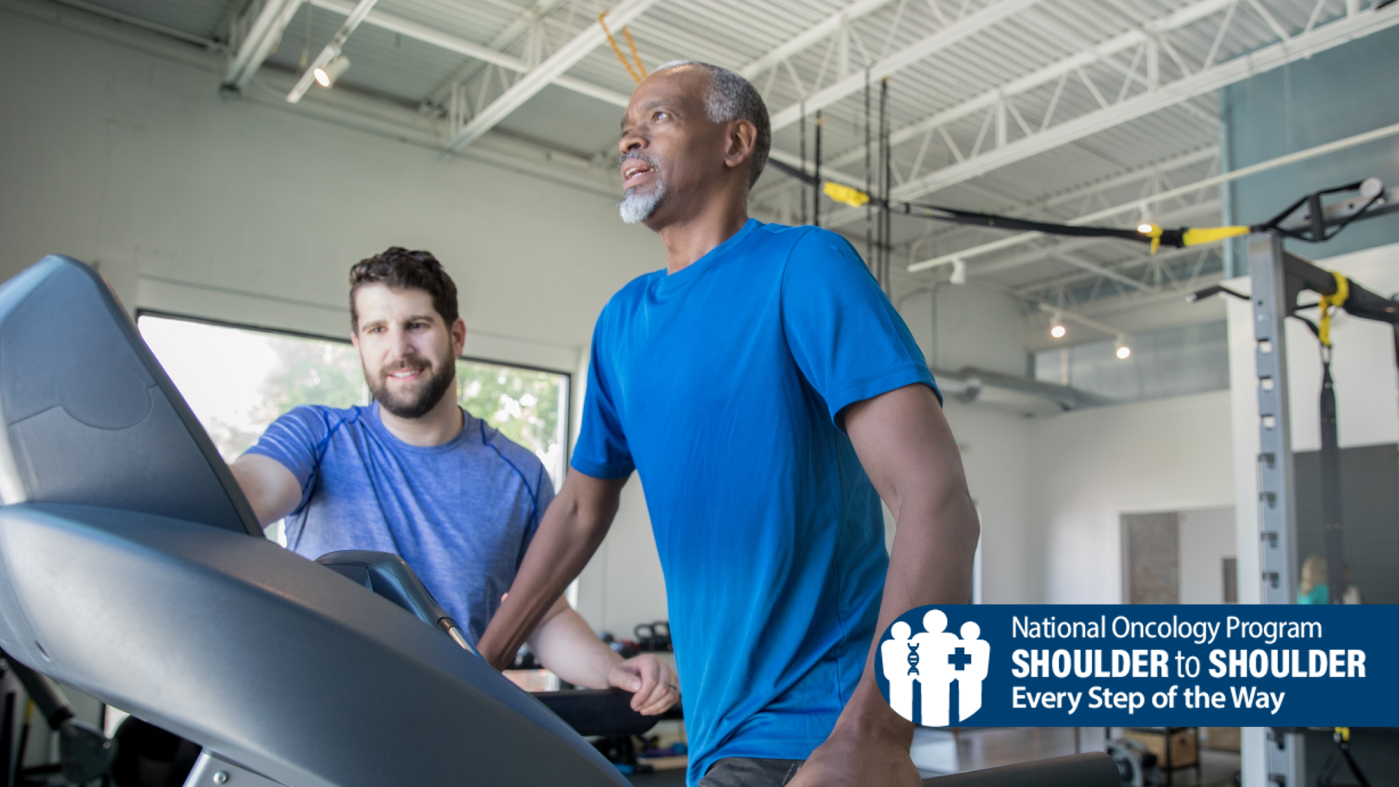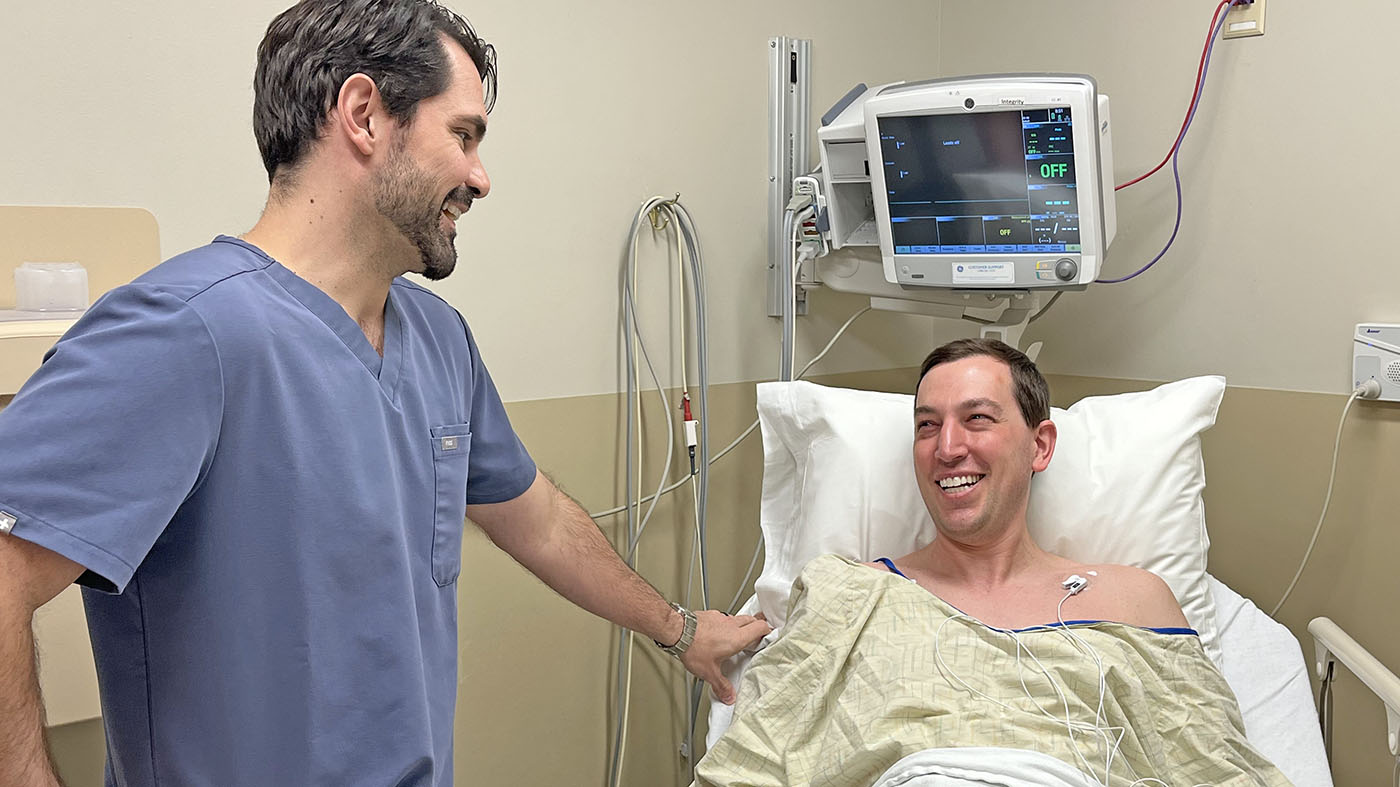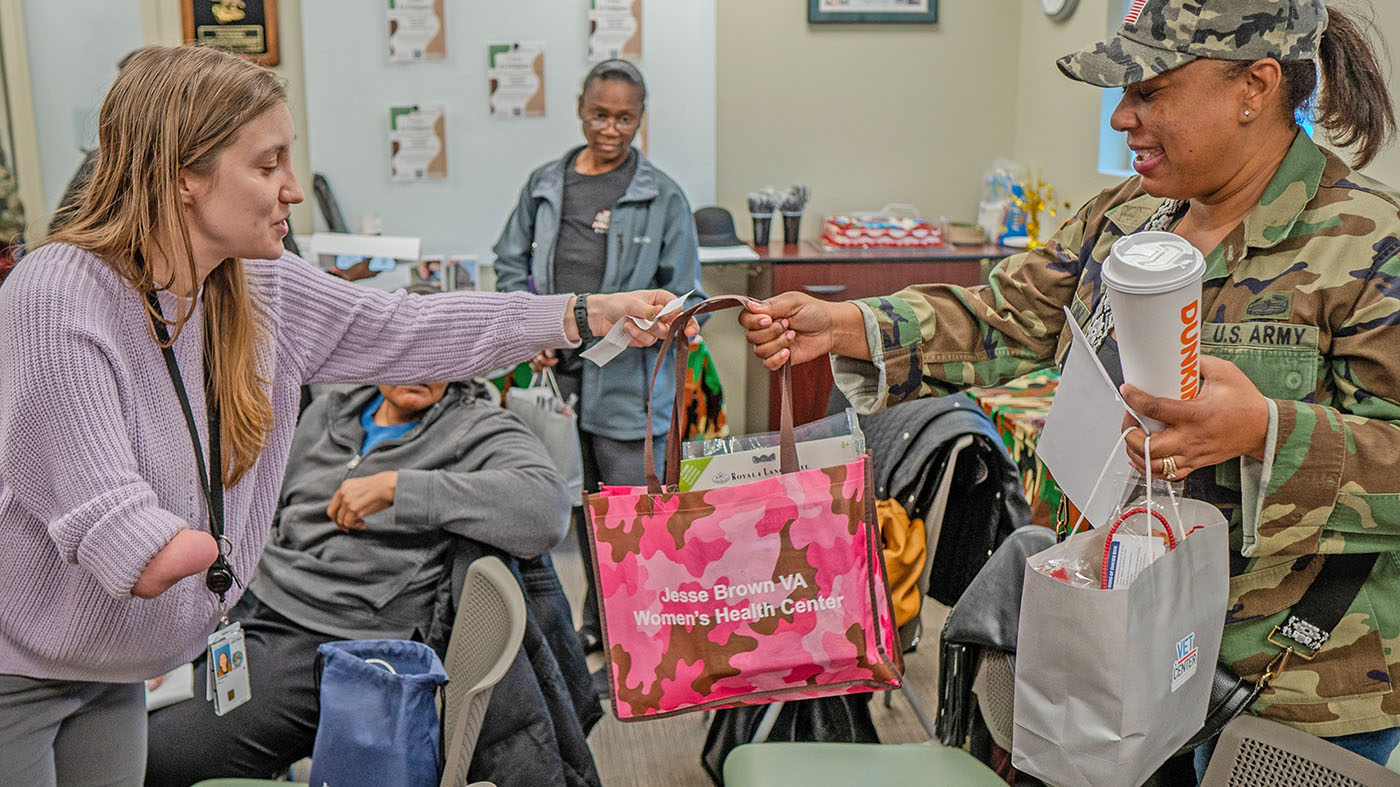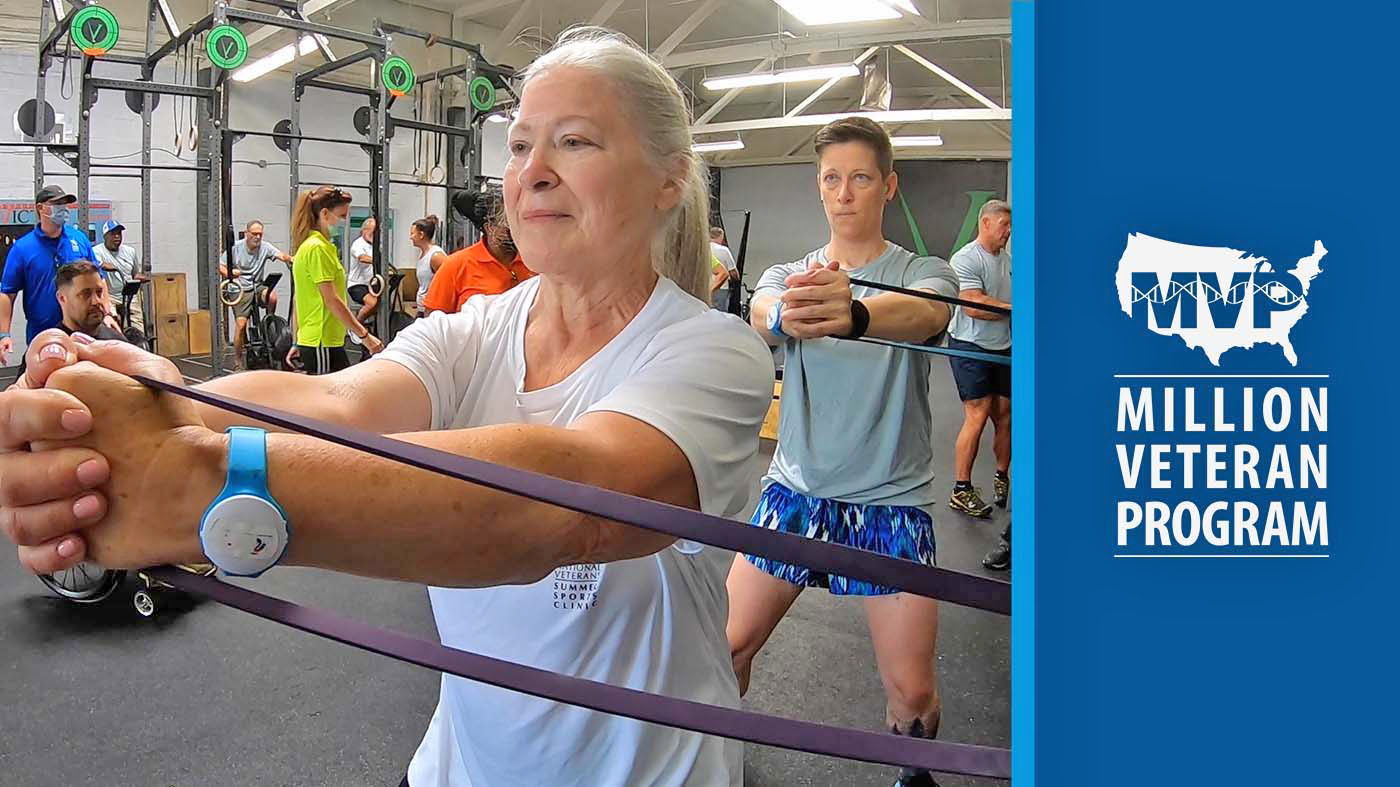An innovative clinical trial out of the Baltimore VA Medical Center called Exercise Rehabilitation in Veteran Cancer Survivors is examining the role of exercise in managing neuropathic pain in lung cancer survivors. Neuropathic pain, which includes numbness, tingling, pins and needles sensations, sensitivity to touch, and/or muscle weakness is common after surgery and chemotherapy in lung cancer survivors.
“Lung cancer is one of the most commonly diagnosed cancers in Veterans,” said Kathleen Griffith, Ph.D., MPH, FNP-BC, research health scientist at the Baltimore VA, and associate dean for Research and the Ph.D. program at the George Washington University School of Nursing. “Lung cancer is often diagnosed at an earlier stage for patients in VA compared to non-VA settings, which means some Veterans with lung cancer are living longer. However, that means they are also managing symptoms, such as pain, for longer as well.”
VA diagnoses and treats 8,000 Veterans with lung cancer annually. The trial findings will benefit the 900,000 Veterans who are at-risk of developing lung cancer due to older age, a history of smoking, and environmental exposures during or after military service.
A clinical trial to manage chronic pain
“The goal of the clinical trial is to use exercise as a non-medical related treatment to improve Veterans’ mobility and function while also managing chronic pain,” said Alice Ryan, Ph.D., senior research career scientist, VA Rehabilitation Research & Development, professor of medicine at the University of Maryland School of Medicine, and principal investigator for the study.
Exercise may help reduce the perception of pain the same way some medications do. By examining if prescribed exercise can reduce chronic pain, study findings could have a large impact on the quality of life for all cancer survivors. There is currently no way to prevent the development of neuropathic pain in lung cancer survivors. The long-term effects of this pain include extended suffering, disability, and chronic use of opioid and other medications.
When participants join the study, they continue their normal activities for six weeks. After this control period, they begin a 6-week exercise regimen consisting of cardio, strength and balance training. Twice a week, participants exercise with a trainer while having their heart rate monitored. Participant perception of pain, fitness and physical function is measured at the beginning of the study, after the six weeks control period, and then six weeks after the exercise intervention.
If you are a lung cancer survivor and are interested in participating in this clinical trial, contact Dr. Alice Ryan at Alice.Ryan@va.gov or Danielle Etchberger at Danielle.Etchberger@va.gov to learn more.
Exercise: a prescription for all cancer survivors
The National Comprehensive Cancer Network Guidelines for Patients, Survivorship Care for Healthy Living, highlights physical activity as a safe technique to improve health for most survivors. Before starting any new exercise program, talk to your cancer or primary care provider.
“Even light exercise, such as short walks, can reduce a patient’s fatigue and other symptoms related to pain,” said Griffith.
According to the American Society of Clinical Oncology, benefits of exercise for cancer survivors include:
- Reduced risk of some cancers reoccurring
- Improved self-esteem
- Feeling happier
- Being less likely to have depression, anxiety and fatigue
- Having more strength and endurance
- Better bone health
- Maintaining a healthy weight
Ask your local VA Medical Center about peer-to-peer exercise programs or survivorship resources that can help you on your cancer survivorship journey.
Cancer care at VA
Veterans with lung cancer have access to best-in-class cancer treatment at VA through the National Oncology Program’s Lung Precision Oncology Program (LPOP). LPOP brings together cancer best practices, cutting edge treatments, and new technologies and resources. Through this program, Veterans receive testing that identifies actionable molecular biomarkers (e.g., DNA mutations) to guide metastatic lung cancer care treatment.
VA’s priorities to improve lung cancer care include:
- Prioritizing screening to identify early-stage lung cancer
- Improving access for Veterans with advanced lung cancer to precision oncology clinical trials
- Enabling rapid translation of discoveries into clinical care
To learn more about cancer care at VA, visit cancer.va.gov or cancer@va.gov.
Topics in this story
More Stories
Navy Veteran and president of the American Medical Association got a colonoscopy and encourages other Veterans to do the same.
Chicago Vet Center and VA gave women Veterans information on VA services available to them.
MVP’s research informs personalized care for Veterans, supporting whole health and beyond.







DEAR ELAINE; I AM 87 YEARS OLDE; AND ICANNOT POSSIBLY COMPARE MY PAIN FROM BONE ON BONE ARTHRITIS IN MY RIGHT HIP, GROIN AND KNEE TO BEING A CANCER SURVIVOR I HAVE FOUND THAT EXERCISE AND PUSHING YOURSELF TO THE LIMIT AND BEYOND (ENDURDING PAIN) HAS DEFINTELY HELPED IN MANAGING MY MOBILITY. .
BY PUSHING MYSELF TO THE LIMIT AND BEYOND (EVEN THOUGH I STILL HAVE INTERVALS OF PAIN) i FIND THAT I CAN WALK 3/4 OF A MILE WITHOUT A WALKER OR CANE. AND. BELIEVE IT OR NOT, ONE DAY AFTER COMPLETETING THE 3/4 MILE I WENT TO THE CLUBHOUSE AND WALKED ANOTHER MILE ON THE THREADMILL ONE DAY = 1-3/4 MILES SINCE LAST OCTOBER WHEN MR ARTHUR RITIS FOUND ME I HAVE NOT YET FALLEN AND LAST TUESDAY I EVEN WENT TO A DANCE.
I PERSONALLY FEEL THAT FREQUENT EXERCISING AND ENDURING INTERVALS OF PAIN HASDEFINIELY HELPED MY MOBLITY
Have you received any help yet?
My husband was diagnosed with lung cancer attributed to Agent Orange in September 2020. He underwent 10 days of SBRT radiation and 4rounds of chemo. He just left the VAMC after spending 12 days in urgent care for radiation pneuma titis and then went to the VA nursing home for 16 days. He came home and his oxygen consumption at rest doubled from 2L to 4L. It has been 11 days since he was discharged and one RN has come to the house.. another RN from a different organization has an intake six days from now. I’ve been up to the VA hospital and spoken to primary care on four different occasions and their responses if he’s having problems take him to the emergency room. He is unable to get out of bed without his heart rate rising to 157. Although it fluctuates in the days when it’s 115. He also has low blood pressure and dizziness. I am not sure what to do. Other than to monitor him carefully and wait until resources finally arrive which I guess is going to be next week because the person that was supposed to do occupational therapy at 9 AM this morning didn’t show up. Physical therapy has also not shown up or called. I understand that my husband is in palliative care and has a prognosis of life expectancy with a short timeframe. However I am devastated that two weeks have gone by and only now are appointments being set up for the following week. Given that his prognosis was two months to two years two weeks is a long time to wait. His breathing is becoming worse. Really need help!